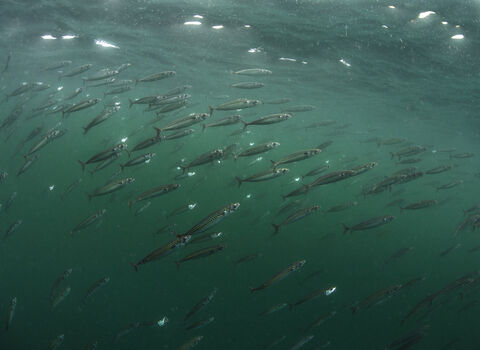
Mackerel ©Alexander Mustard/2020VISION
Mackerel
Mackerel are a sign of summer's arrival, when they appear inshore in huge numbers all around the UK. As well as being a sustainable seafood choice, they are an important food source for many of our marine predators.
Scientific name
Scomber scombrusWhen to see
January to DecemberTop facts
Stats
Length: usually around 30cm, but up to 60cmWeight: can reach 3.4kg
Classified as a Priority Species under the UK Post-2010 Biodiversity Framework and listed as of Least Concern on the IUCN Red List.
